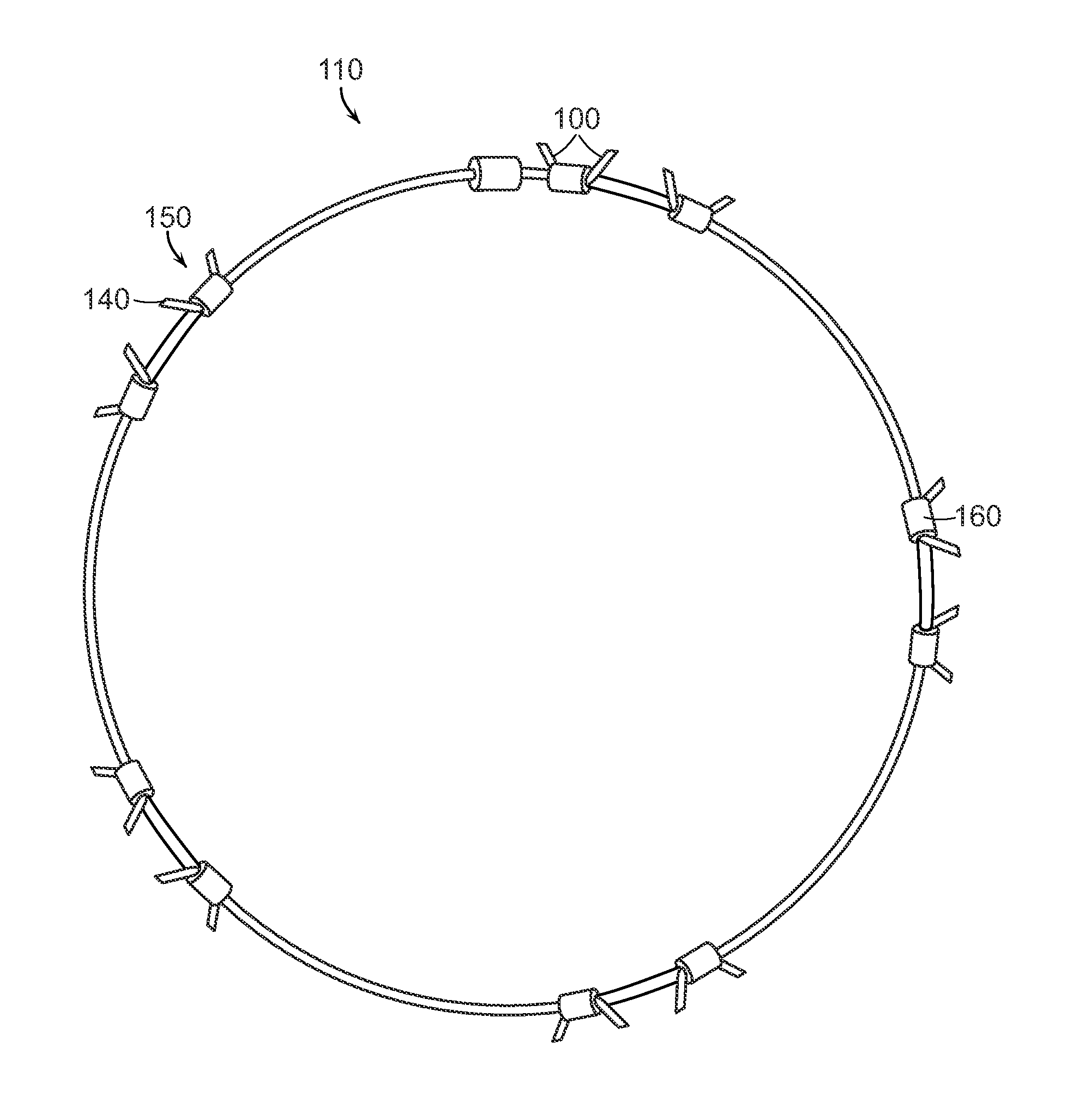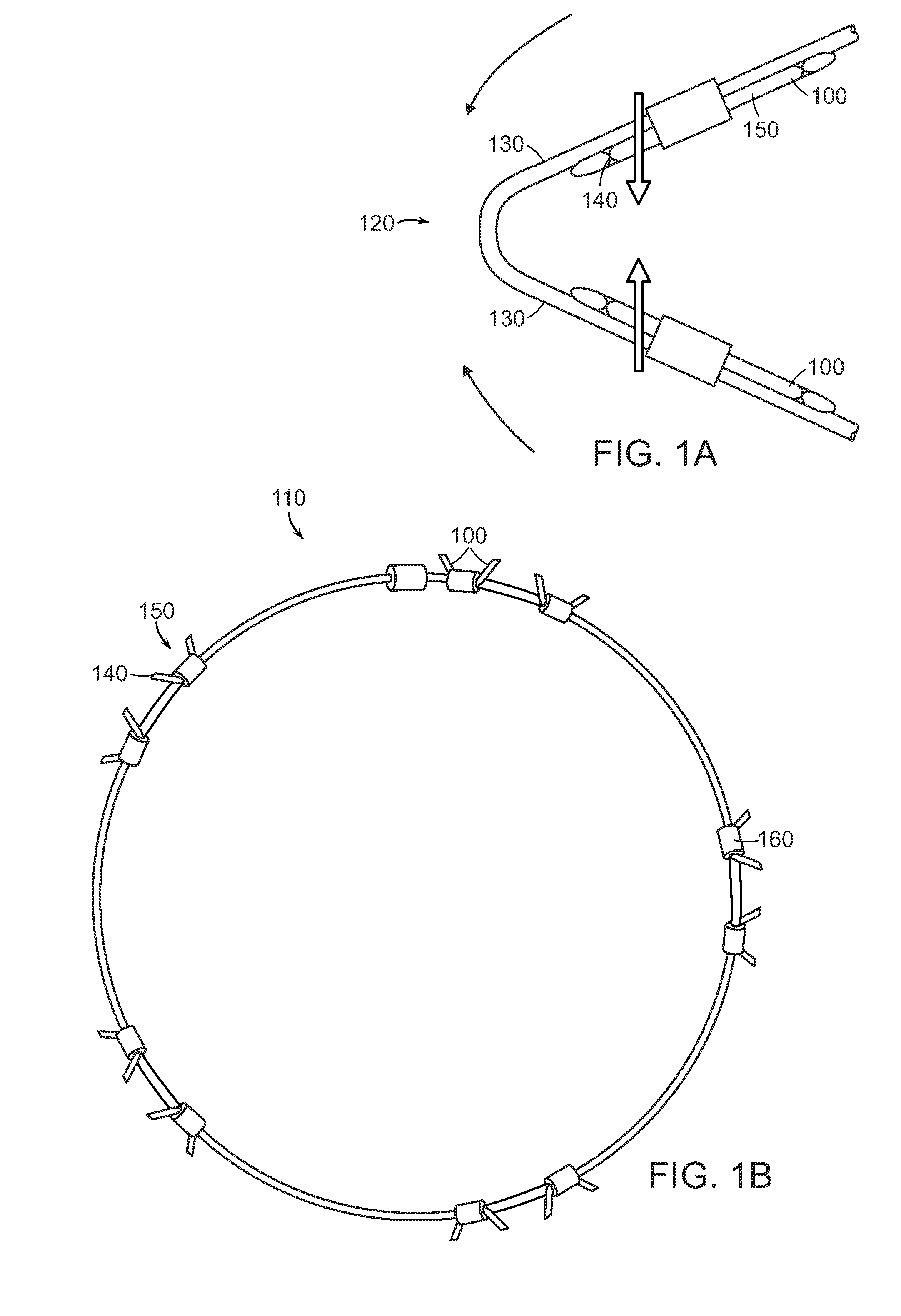Porous barbs for long-term anchoring in the gastrointestinal tract
a long-term anchoring and porous barb technology, applied in the field of porous barbs for long-term anchoring in the gastrointestinal tract, can solve the problems of device instability, device long-term anchoring beyond 12 months, and has not been achieved, and achieves the effect of promoting tissue ingrowth
- Summary
- Abstract
- Description
- Claims
- Application Information
AI Technical Summary
Benefits of technology
Problems solved by technology
Method used
Image
Examples
Embodiment Construction
[0023]A description of preferred embodiments of the invention follows.
[0024]Gastrointestinal implants can be used for a number of treatments. Implants placed within the gastrointestinal tract are typically subject to substantial mechanical forces related to the digestion process.
[0025]At least some anchoring devices for anchoring an implant use an interference fit, placing an implant device having a relaxed diameter larger than the diameter offered by the intestine. Other anchoring devices use barbs that are adapted to penetrate into the surrounding muscular tissue of the gastrointestinal tract. Examples of gastrointestinal implants and anchors used for anchoring implants are described in U.S. Pat. No. 7,025,791 B2, incorporated herein in its entirety by reference.
[0026]To date, only short-term anchoring (3-6 months) of gastrointestinal implants has been achievable. A good analogy for the etiology of the loosening of the barb from the surrounding tissue is to think of the barbs as a...
PUM
 Login to View More
Login to View More Abstract
Description
Claims
Application Information
 Login to View More
Login to View More - R&D
- Intellectual Property
- Life Sciences
- Materials
- Tech Scout
- Unparalleled Data Quality
- Higher Quality Content
- 60% Fewer Hallucinations
Browse by: Latest US Patents, China's latest patents, Technical Efficacy Thesaurus, Application Domain, Technology Topic, Popular Technical Reports.
© 2025 PatSnap. All rights reserved.Legal|Privacy policy|Modern Slavery Act Transparency Statement|Sitemap|About US| Contact US: help@patsnap.com



